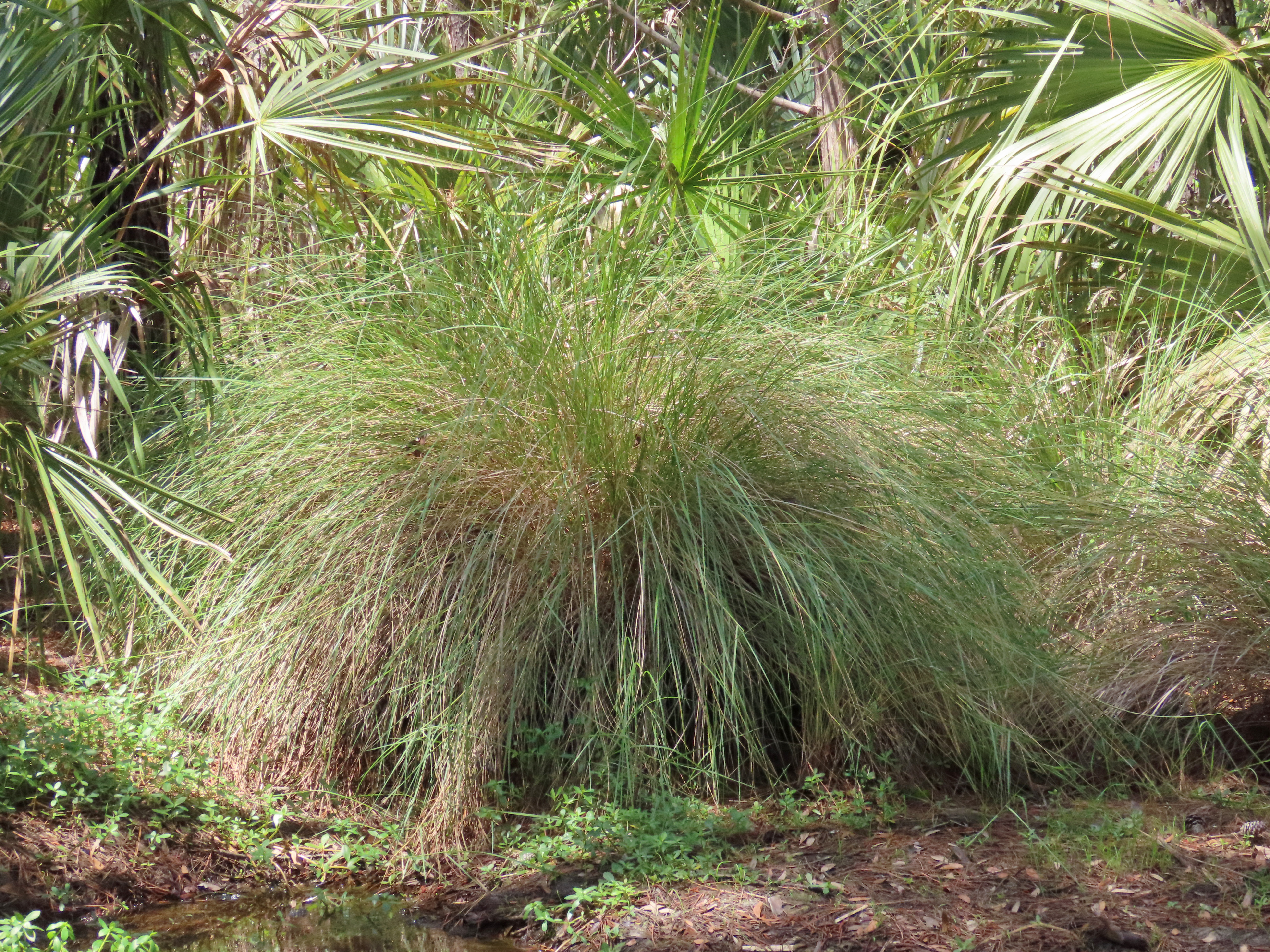
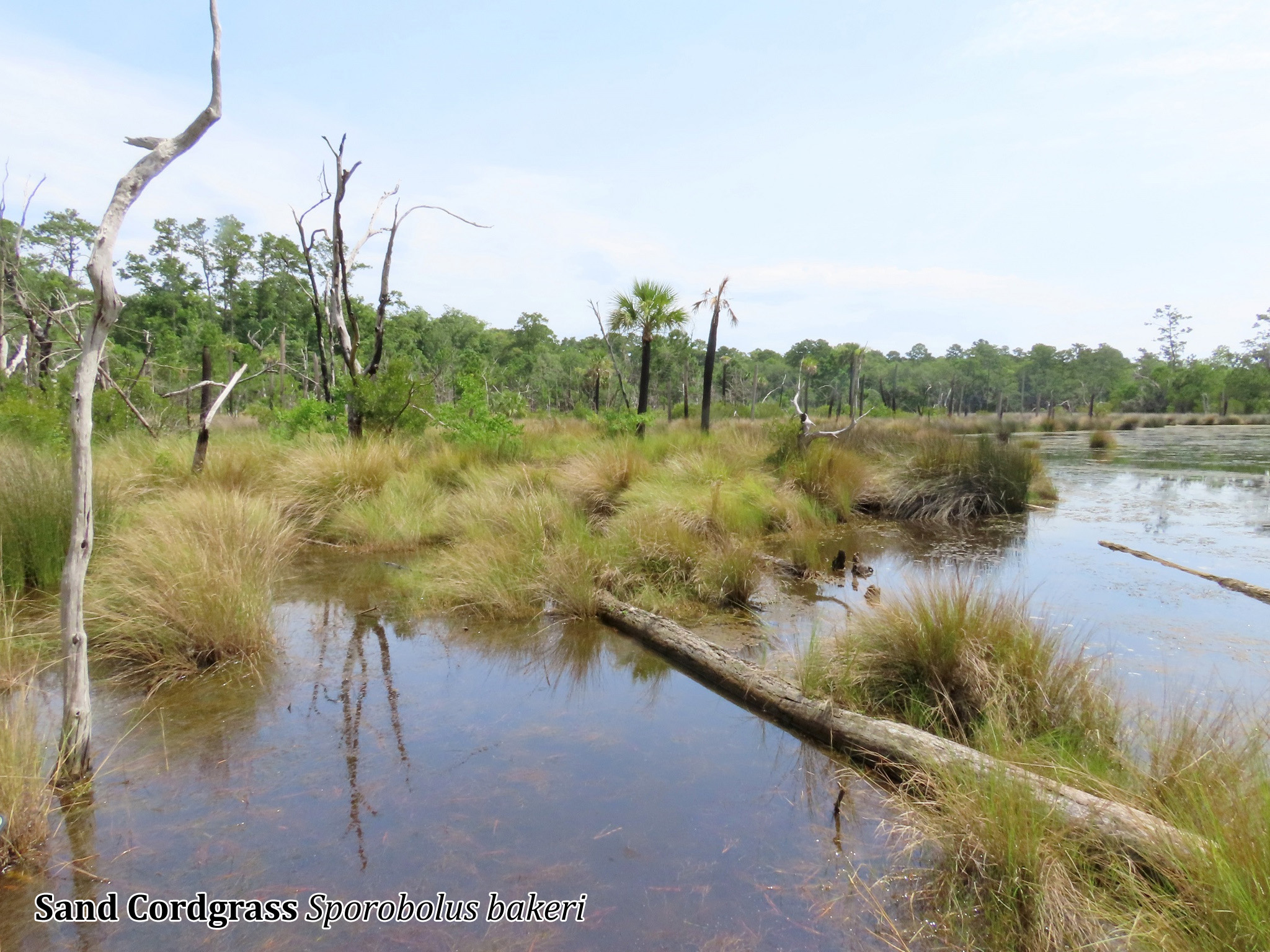
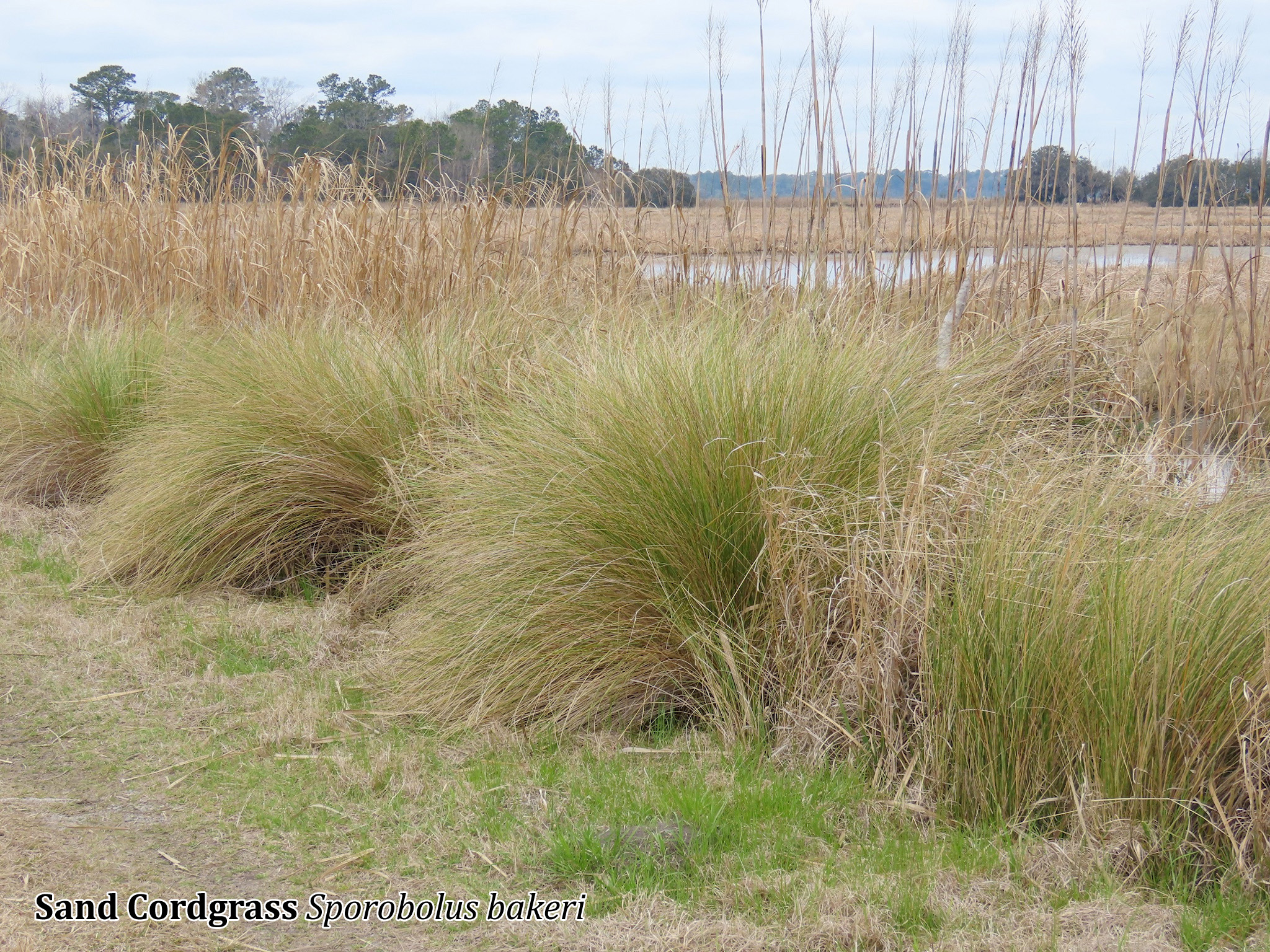
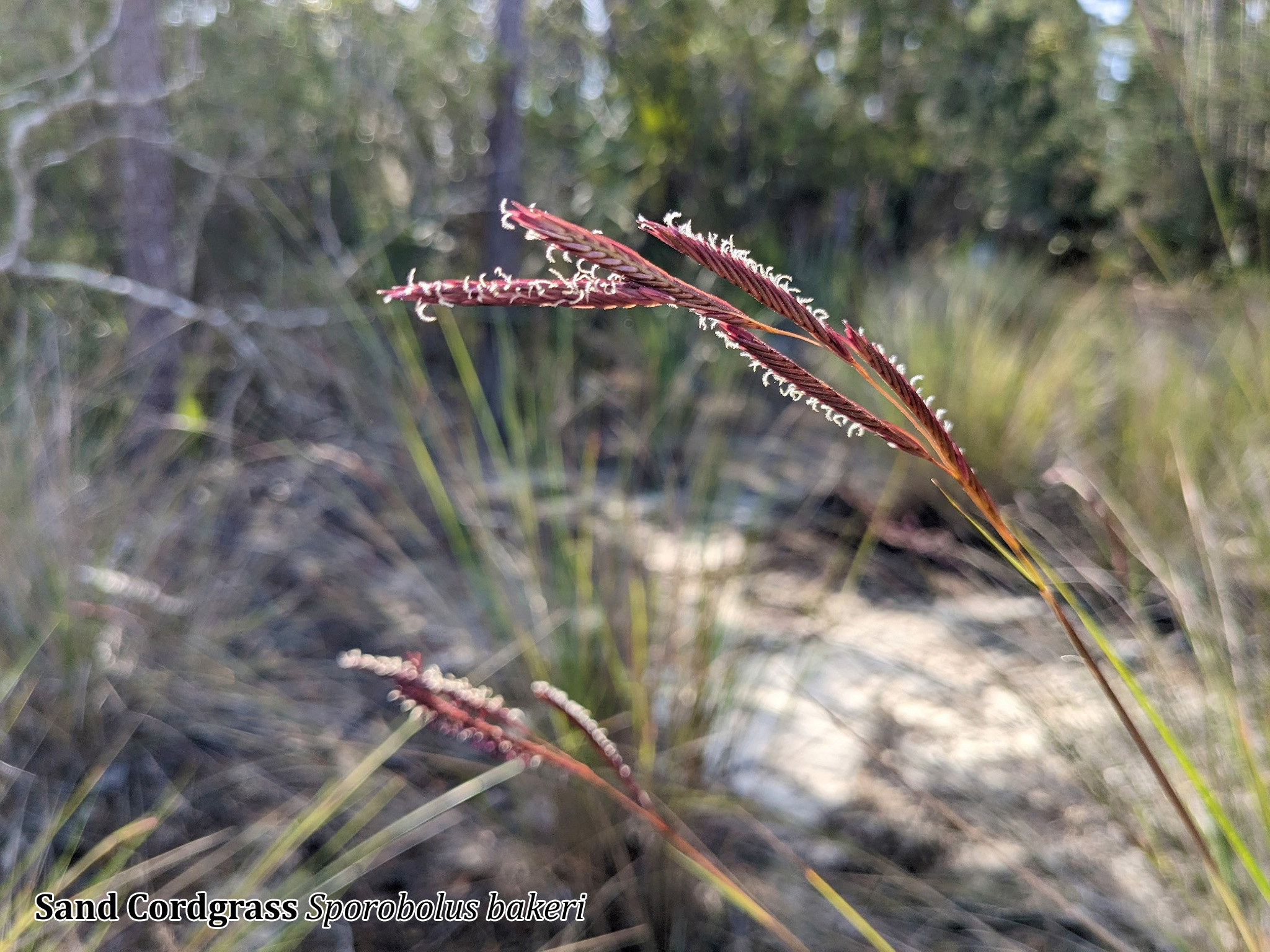
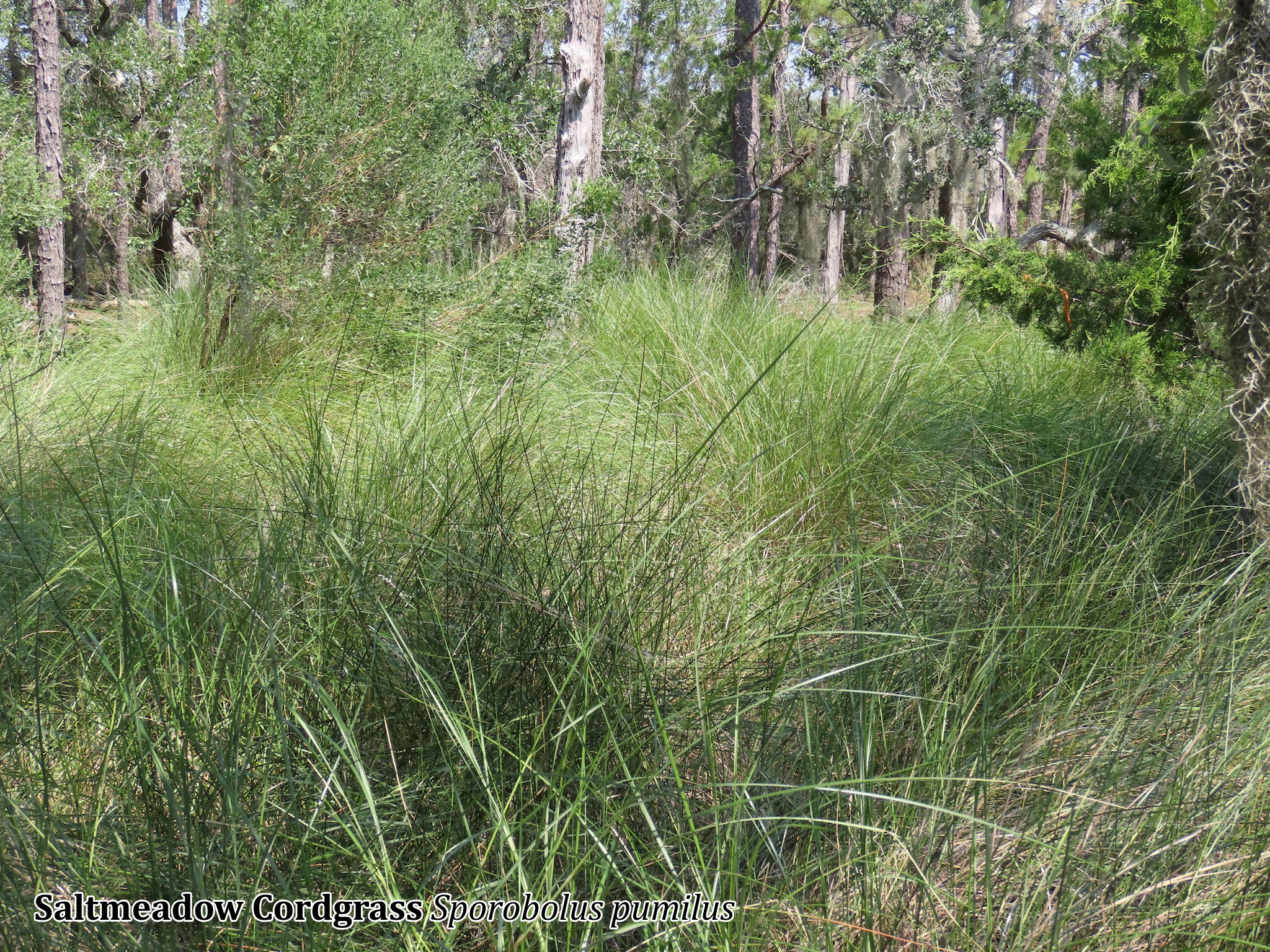
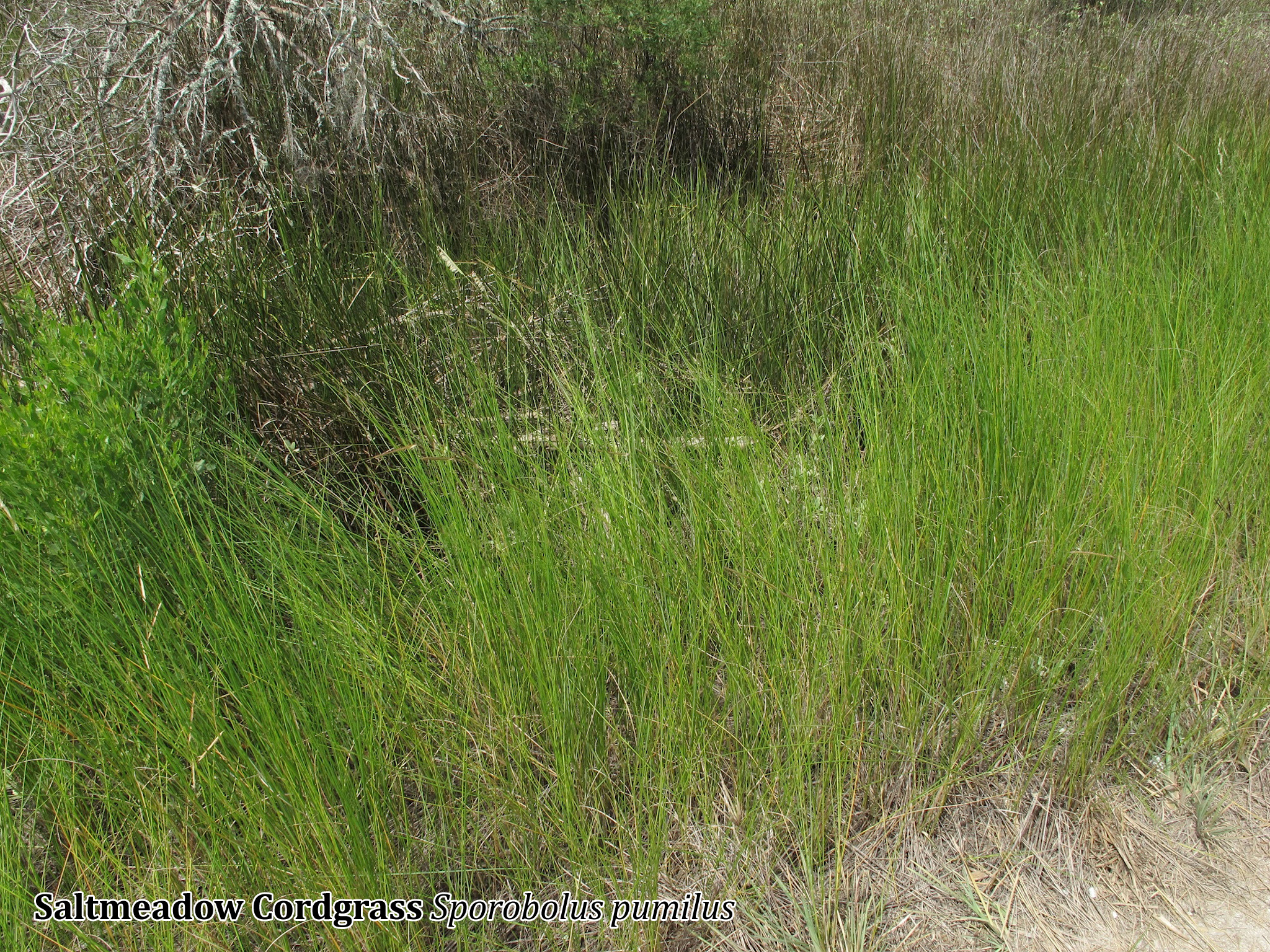
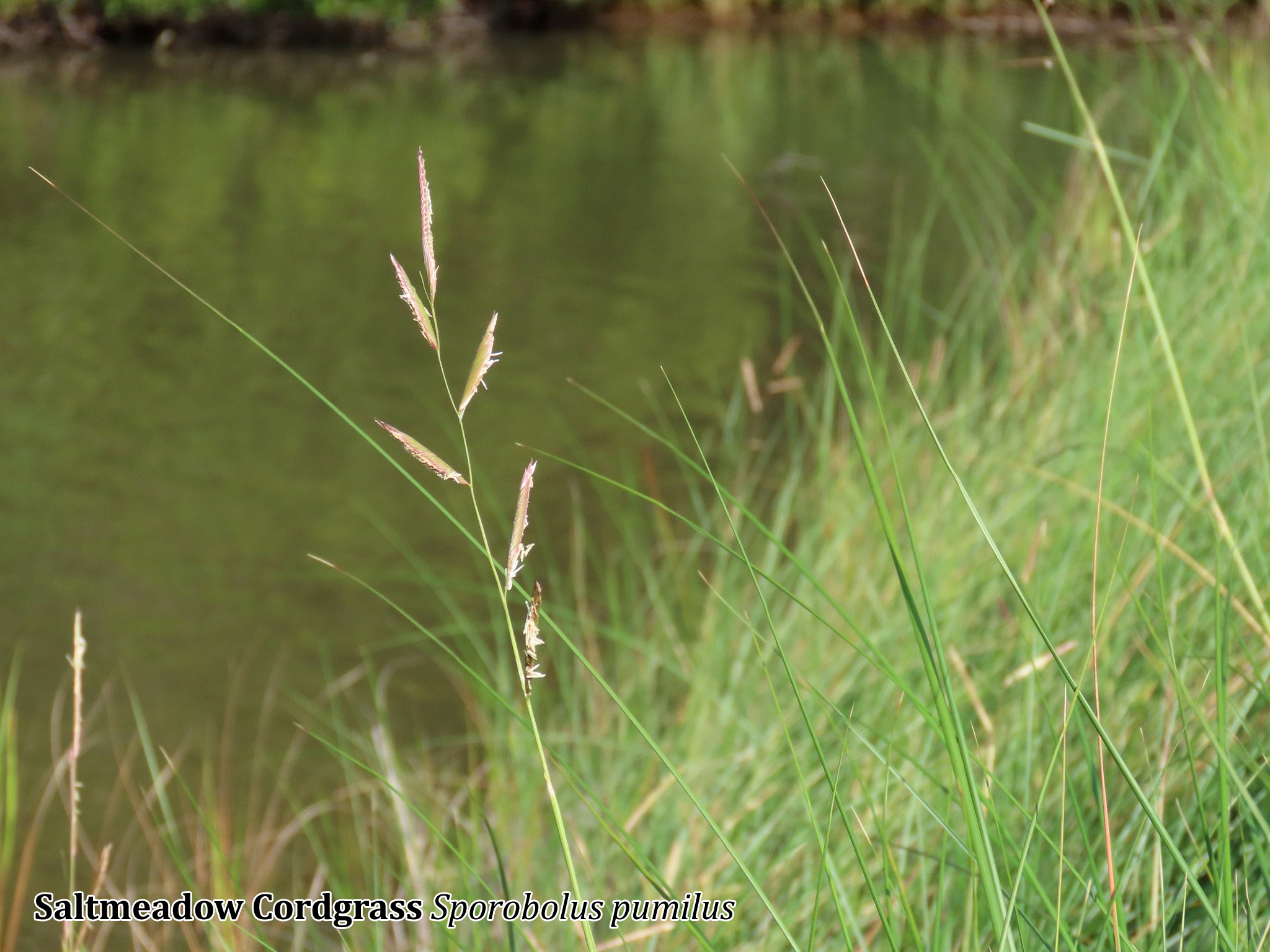
This week for Flora and Fauna Friday we’ve got a pair of native clumping grasses, Saltmeadow Cordgrass (Sporobolus pumilus) and Sand Cordgrass (Sporobolus bakeri).
Both Saltmeadow Cordgrass and Sand Cordgrass are perennial native grasses found along the extreme coast of South Carolina, to include here on Edisto Island. Saltmeadow Cordgrass is a widely distributed plant, being found across the entire eastern seaboard of the United States. Sand Cordgrass is far more limited, mainly residing in Florida northward to Charleston, SC. The two species look very similar. Both spread through their roots but grow as clumps rather than individual stems. They form large, three to five foot high, dome-shaped clumps with their arching grass blades, which have emerald-green foliage fading to straw-yellow with age. Even the flowers of these two species are similar in appearance, a dozen branches of florets stacked tightly like books on a shelf, similar to other Cordgrasses (formerly members of Spartina). One of their few easily described physical differences is that these floral branches in Saltmeadow Cordgrass tend to be more perpendicular to the stem, whereas those of Sand Cordgrass are held upward to nearly parallel. But of course they vary and overlap! In my experience the two are best told apart by their differing preferred habitats and the gestalt of the whole plant.
I find Sand Cordgrass to be a bigger plant overall, often growing chest to chin-high as a well-defined clump with more yellow foliage. Sand Cordgrass is more of an upland plant, growing on banks, dikes, and wetland edges on sandy, moist soils. It also doesn’t tolerate regular saltwater intrusion all that well, preferring to grow in the brackish and freshwater reaches of tidal systems. Here on Edisto Island, I mainly see it on the northwestern corner of the Island, where the freshwater influence of the South Edisto River and the plethora of old dike-works create pockets of suitable habitat. It is far more abundant west of Edisto Island, in the heart of the ACE Basin and around Beaufort. Sand Cordgrass is a wonderful native landscaping plant and does well in wide array of use cases in coastal towns and neighborhoods, but prefers subtropical climes.
Saltmeadow Cordgrass trends more toward a knee to waist-high clump and is more prone to forming loose clumps and monocultures. Saltmeadow Cordgrass is highly tolerant of irregular saltwater intrusion but can’t persist in the true saltmarsh. I most often encounter it on marsh islands, tidal ditch banks, tidal floodplains, and wetland swales where a shallow water table flows into the marsh. Think of it as growing within the king tide line. Places that see a high salty tide once a month or less, but not with daily consistency. Here on Edisto Island, these places, and consequently Saltmeadow Cordgrass, are generally few and far between, but fairly common on Little Edisto Island. Overall in the Lowcountry, Saltmeadow Cordgrass does well as a landscaping plant on the banks of brackish ponds, floating wetland islands, tidal wetlands, and sandy marsh edges.